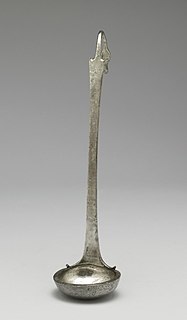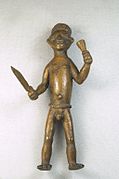
African art describes the modern and historical paintings, sculptures, installations, and other visual culture from native or indigenous Africans and the African continent. The definition may also include the art of the African diasporas, such as African American, Caribbean or art in South American societies inspired by African traditions. Despite this diversity, there are unifying artistic themes present, when considering the totality of the visual culture from the continent of Africa.
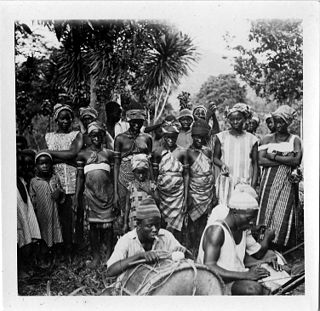
The Mende people are one of the two largest ethnic groups in Sierra Leone; their neighbours, the Temne people, have roughly the same population. The Mende and Temne each account for slightly more than 30% of the total population. The Mende are predominantly found in the Southern Province and the Eastern Province, while the Temne are found primarily in the Northern Province and the Western Area, including the capital city of Freetown. Some of the major cities with significant Mende populations include Bo, Kenema, Kailahun, and Moyamba.
The diverse culture of Ivory Coast, a coastal West African country bordered by Ghana, Liberia, Mali, Burkina Faso, and Guinea, is exemplified by a multitude of ethnic groups, events, festivals, music, and art.
Kuchisake-onna is a malevolent figure in Japanese urban legends and folklore. Described as the malicious spirit, or onryō, of a woman, she partially covers her face with a mask and carries some sort of sharp object. She has been described as a contemporary yōkai.

Sande, also known as zadεgi, bundu, bundo and bondo, is a women's secret society in Liberia, Sierra Leone, Guinea and the Ivory Coast. The Sande society initiates girls into adulthood by rituals including female circumcision. It is alleged by its supporters to confer fertility, to instill notions of morality and proper sexual comportment, and to maintain an interest in the well-being of its members throughout their lives.
Grebo people is a term used to refer to an ethnic group or subgroup within the larger Kru group of Africa, a language and cultural ethnicity, and to certain of its constituent elements. Within Liberia members of this group are found primarily in Maryland County and Grand Kru County in the southeastern portion of the country, but also in River Gee County and Sinoe County. The Grebo population in Côte d'Ivoire are known as the Krumen and are found in the southwestern corner of that country.
The Dan are a Mande ethnic group from northwestern Ivory Coast and neighboring Liberia. There are approximately 700,000 members of the group and their largest settlement is Man, Ivory Coast. Neighboring peoples include the Krahn, Kpelle and Mano. They are officially known as Yacouba in Ivory Coast. In Liberia, they are also known as Gio, which is considered a derogatory exonym.
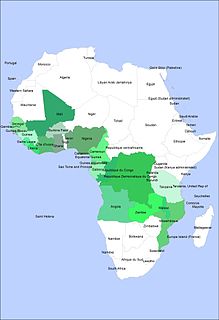
Traditional African masks are one of the elements of great African art that have most evidently influenced Europe and Western art in general; in the 20th century, artistic movements such as cubism, fauvism and expressionism have often taken inspiration from the vast and diverse heritage of African masks. Influences of this heritage can also be found in other traditions such as South- and Central American masked Carnival parades.

Most African sculpture was historically in wood and other organic materials that have not survived from earlier than at most a few centuries ago; older pottery figures are found from a number of areas. Masks are important elements in the art of many peoples, along with human figures, often highly stylized. There is a vast variety of styles, often varying within the same context of origin depending on the use of the object, but wide regional trends are apparent; sculpture is most common among "groups of settled cultivators in the areas drained by the Niger and Congo rivers" in West Africa. Direct images of African deities are relatively infrequent, but masks in particular are or were often made for traditional African religious ceremonies; today many are made for tourists as "airport art". African masks were an influence on European Modernist art, which was inspired by their lack of concern for naturalistic depiction.

Benin art is the art from the Kingdom of Benin or Edo Empire (1440–1897), a pre-colonial African state located in what is now known as the South-South region of Nigeria. Primarily made of cast bronze and carved ivory, Benin art was produced mainly for the court of the Oba of Benin - a divine ruler for whom the craftsmen produced a range of ceremonially significant objects. The full complexity of these works can be appreciated only through the awareness and consideration of two complementary cultural perceptions of the art of Benin: the Western appreciation of them primarily as works of art, and their understanding in Benin as historical documents and as mnemonic devices to reconstruct history, or as ritual objects. This original significance is of great import in Benin.

Carved: The Slit-Mouthed Woman is a 2007 Japanese horror film directed by Kōji Shiraishi and written by Shiraishi and Naoyuki Yokota. Based on the Japanese urban legend known as Kuchisake-onna, or "the Slit-Mouthed Woman", the film stars Eriko Sato as Kyōko Yamashita, a divorced mother and teacher who attempts to solve a series of child abduction cases with the help of her co-worker Noboru Matsuzaki, played by Haruhiko Kato.

The Yoruba of West Africa are responsible for one of the finest artistic traditions in Africa, a tradition that remains vital and influential today.

An adorned wood face mask from the We (Wee) people of West Africa, dated to the 20th century is in the permanent African collection at the Indianapolis Museum of Art and on display in the Eiteljorg Suite of African and Oceanic Art.

The use of bronze dates from remote antiquity. This important metal is an alloy composed of copper and tin, in proportion which vary slightly, but may be normally considered as nine parts of copper to one of tin. Other ingredients which are occasionally found are more or less accidental. The result is a metal of a rich golden brown colour, capable of being worked by casting — a process little applicable to its component parts, but peculiarly successful with bronze, the density and hardness of the metal allowing it to take any impression of a mould, however delicate. It is thus possible to create ornamental work of various kinds.

Court and ceremonial art makes up a vital corpus of Benin art. Private and public ceremonies mark many of the important moments in Benin’s yearly calendar. In the past, an elaborate series of rites were performed throughout the year to secure otherworldly support for the kingdom’s well-being and to celebrate decisive events in its history.

Kuba art comprises a diverse array of media, much of which was created for the courts of chiefs and kings of the Kuba Kingdom. Such work often featured decorations, incorporating cowrie shells and animal skins as symbols of wealth, prestige and power. Masks are also important to the Kuba. They are used both in the rituals of the court and in the initiation of boys into adulthood, as well as at funerals. The Kuba produce embroidered raffia textiles which in the past was made for adornment, woven currency, or as tributary goods for funerals and other seminal occasions. The wealth and power of the court system allowed the Kuba to develop a class of professional artisans who worked primarily for the courts but also produced objects of high quality for other individuals of high status.

Masks are the most important art form of the Dan people of Liberia. The Dan people refer to these masks as gle or ge, terms that refers both to the physical mask and the individual spirits the mask is believed to embody during masquerade performances.

The Bronze Head from Ife, or Ife Head, is one of eighteen copper alloy sculptures that were unearthed in 1938 at Ife in Nigeria, the religious and former royal centre of the Yoruba people. It is believed to represent a king. It was probably made in the thirteenth-fourteenth century C.E., before any European contact had taken place with the local population. The realism and sophisticated craftsmanship of the objects challenged Western conceptions of African art at the time. A year after its finding, the Ife Head was taken to the British Museum.
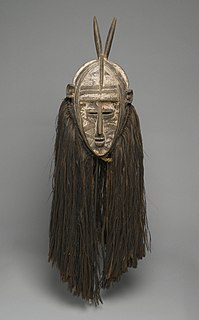
Burkina Faso is a small, landlocked country north of Ghana and south of Mali and Niger. Economically, it is one of the four or five poorest countries in the world. Culturally, it is extremely rich. In part this is because so few people from Burkina have become Muslim or Christian. Many of the ancient artistic traditions for which Africa is so well known have been preserved in Burkina Faso because so many people continue to honor the ancestral spirits, and the spirits of nature. In great part they honor the spirits through the use of masks and carved figures. Many of the countries to the north of Burkina Faso had become predominantly Muslim, while many of the countries to the south of Burkina Faso are heavily Christian. In contrast many of the people of Burkina Faso continue to offer prayers and sacrifices to the spirits of nature and to the spirits of their ancestors. The result is that they continue to use the sorts of art that we see in museums in Europe and America.
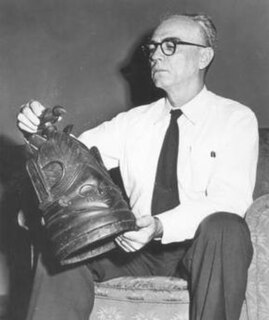
George Way Harley was an American Methodist medical missionary. He spent 35 years in Ganta, Liberia, where he established Ganta Hospital, a school and a church. He was known for his research into the local culture, and received many honors from the Liberian government and from American and British institutions. Major collections of ceremonial masks purchased by Harley in Liberia are held in the Peabody Museum of Archaeology and Ethnology at Harvard University and the Anthropology Department of the College of William & Mary.





